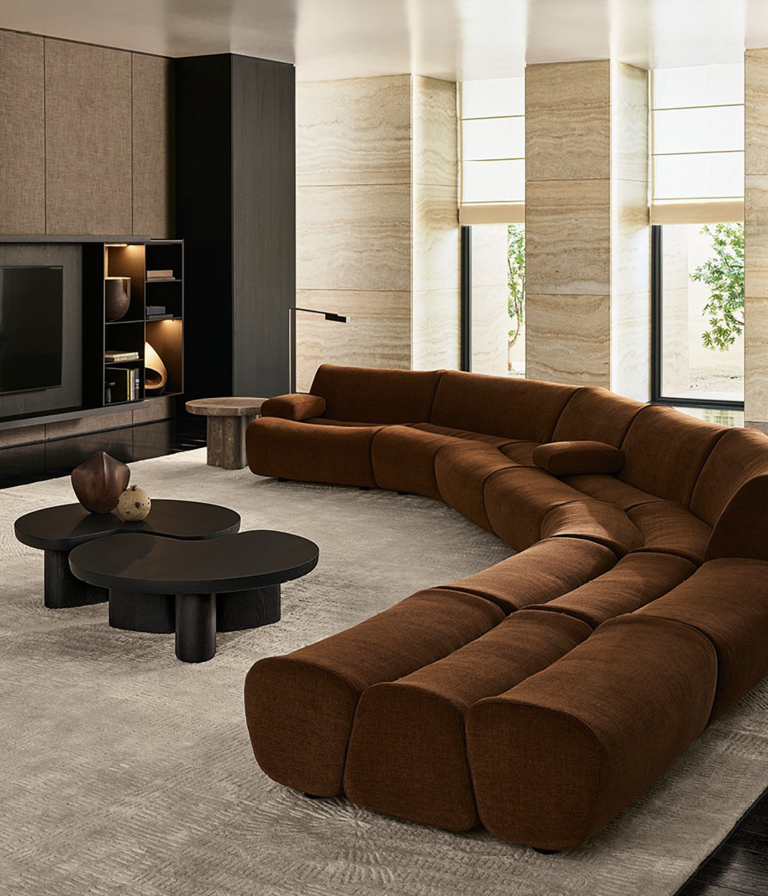
Marfa Residence by Selldorf Architects and Jeffrey Bilhuber
Located in the desert city of Marfa – a cultural hub for minimalist art – Marfa Residence honours the legacy of Donald Judd, whose creative works helped shape the city’s reputation. Renovated by Selldorf Architects in collaboration with interiors company, Jeffrey Bilhuber, the home presents rhythmic geometries and restrained detailing that evoke the region’s distinct landscape.
In the time of artist Judd, Marfa was a remote area of West Texas, consisting mostly of desert, river and surrounding rangelands. The combination of open space and harsh sunlight made it an ideal setting for displaying his minimalist art, which often sought to clarify the object. The Marfa of today retains the elemental qualities that first drew Judd while also celebrating his legacy.
Tourists flock to The Chinati Foundation – the contemporary museum founded by Judd himself – as well as The Block, his private home and studio, and various Judd Foundation spaces that showcase his furniture and paintings alongside works by other artists. The hilltop site of Marfa Residence was once owned by Judd and includes an adjoining parcel of land. For its new owners, the history of both the city and site was reason enough to secure the purchase.
The existing house, originally designed in the Spanish Colonial Revival style by Henry Charles Trost, had lost many of its original details to previous renovations. Selldorf Architects began by optimising the floor plan, merging multiple small rooms on the main level to establish a spacious living area designed to accommodate gatherings of varying sizes. They also crafted a chef’s kitchen fitted with an oversized island that seats six. An intimate stairway leads to the primary suite, and the juxtaposition of these two spaces fosters an engaging experience of compression and release. Addressing the land adjacent to the house, Selldorf Architects introduced a guest casita and garage, complemented by an entertaining pavilion on a nearby hill. Clad in clay-coloured stucco, the simple volumes are thoughtfully aligned to ensure effortless visual transitions.
Drawing inspiration from the drive across Marfa to the site, Jeffrey Bilhuber designs the interiors to reflect a spirit of discovery. Vintage items are woven into compositions featuring textiles from Turkey and Uzbekistan, as well as contemporary artworks by Walead Beshty and Rashid Johnson. Each bedroom is connected to the landscape through colour and, as an ode to American architect Bill Willis, presented with carefully selected tilework. Willis’ Moroccan interiors embody restraint amid complexity, making the reference especially fitting in the context of semi-arid Marfa. Nods to Judd, like those to Willis, are purposefully restrained: a Judd daybed features in the entertaining pavilion; shelving in classic Judd style enhances the library; and privacy walls across the site are reminiscent of The Block’s perimeter. The design instead emphasises the geometric harmonies that are characteristic of Judd’s work.
An emotive home, Marfa Residence successfully captures the spirit of art and opportunity that define the desert city. While paying homage to the work of Judd, Selldorf Architects and Jeffrey Bilhuber expand upon the minimalist language, offering a liveable interpretation of pared-back forms.
Architecture by Selldorf Architects. Interior design by Jeffrey Bilhuber. Landscape design by Madison Cox Associates.

![Book Flatlay Cover Front Transparent Trio[1]](https://d31dpzy4bseog7.cloudfront.net/media/2024/06/07080212/Book_Flatlay_Cover_Front_Transparent_Trio1.png)



























